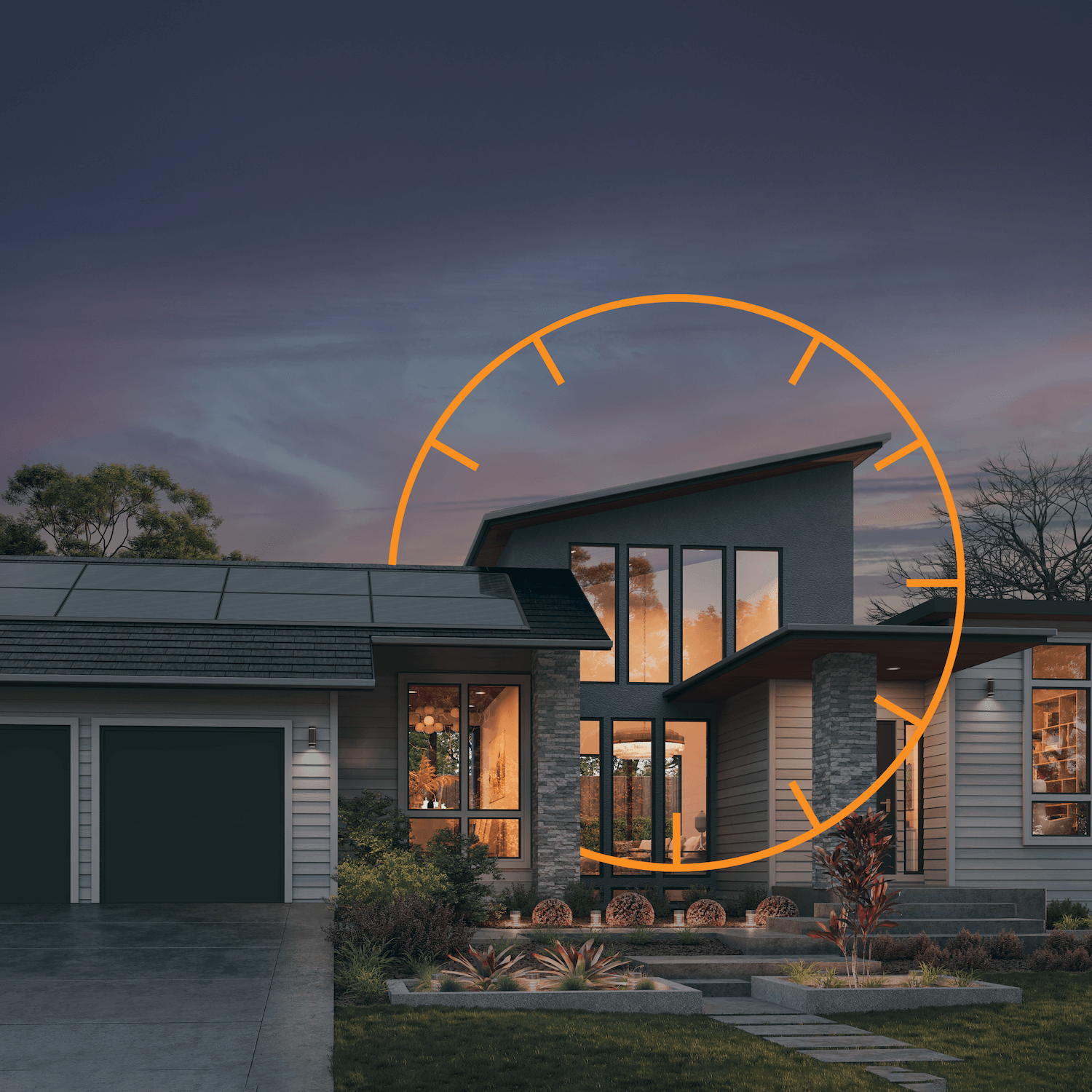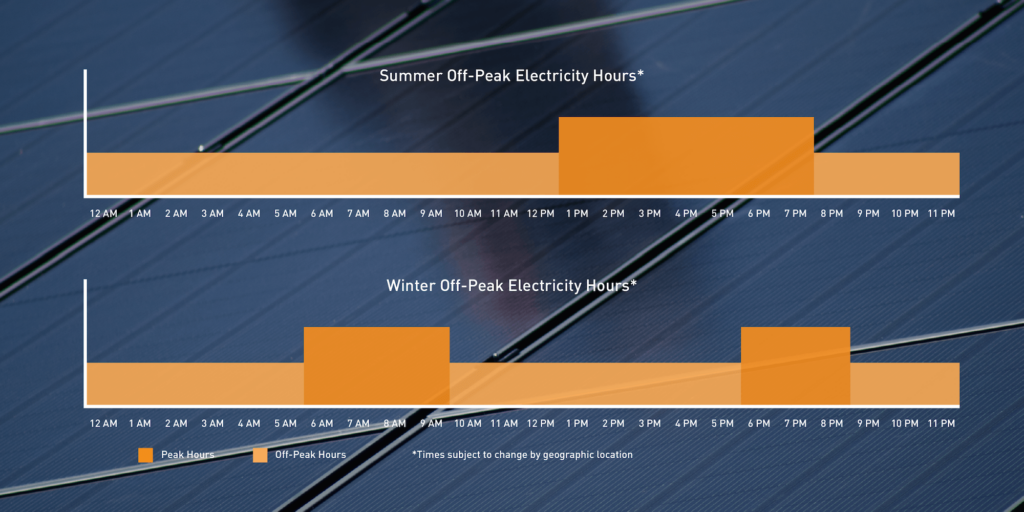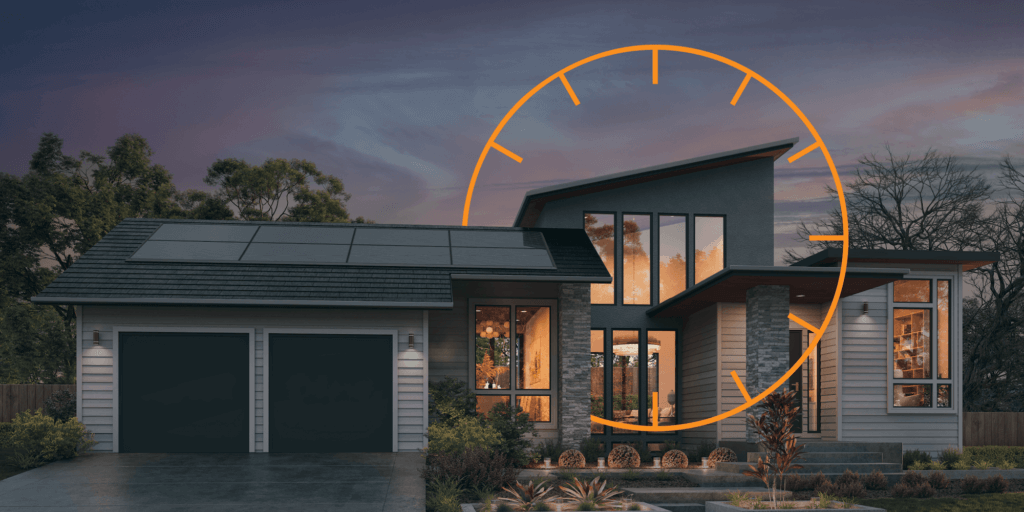
The term peak makes its way into many solar panel explanations. When you fill out the Estimate Savings form with at Blue Raven Solar, we will discuss how roof layout, average weather, and the way the earth tilts all factors into your peak hours for maximum solar energy generation.
What do peak electricity hours mean? We talk in-depth about it in our blog, titled Daily Peak Sun Hours and Your Home Solar Energy System. While it is important to know about peak hours, there is another term to know when it comes to solar power and electricity generation: off-peak electricity hours.

The simple definition of off-peak hours is “the opposite of peak hours,” however there are two specific definitions associated that homeowners like you should be aware of:
Definition #1: Off-Peak Sunlight Hours
The hours during the day before and after daily peak sun hours.
This is the opposite of the detailed peak sun hours we discuss in the article linked above. Due to the earth’s axial tilt, our seasons change, and the average sunlight hours vary across the year. Due to average weather conditions, sunlight hours may be more or less scarce in an area.
Peak sunlight hours—or the time solar panels receive maximum sunlight in a day—is usually between 10 a.m. and 4 p.m., though your exact situation may differ. The hours outside of the peak sun hour window are your off-peak sunlight hours. While your solar system continually generates energy when sunlight strikes the panels (even on a cloudy day), they will be a little less efficient at generating power during off-peak sunlight hours.
Definition #2: Off-Peak Electricity Hours
The hours during the day when electricity costs are less due to decreased demand in the community.
The other definition of off-peak electricity hours is related to the electricity economy rather than the physical properties of the sun, earth, and weather. There are certain times of the day when a community’s electrical grid is under more intense stress and demand. When most people return from work and use their household appliances, it is considered peak electricity hours During the night and early morning hours, when all the lights are off, it is typically considered off-peak.
To account for these highs and lows in energy use, many utility companies offer time-of-use electricity plans which coordinate with customers around off-peak hours.

When are Off-Peak Electricity Hours?
You can generally expect off-peak electricity hours to be from approximately 7 p.m. to 1 p.m. (the next day) in the summer months. Winter months sometimes see two off-peak periods in a day: 10 a.m. to 5 p.m. and 9 p.m. to 6 a.m. (the next day). However, it is important to note these hours can vary by time zone and region. Since off-peak electricity hours are determined by electricity supply and demand, there is not a sure way of telling outside of your utility company’s specific plan.
For example, Duke Energy in North Carolina lists its off-peak hours as:
- Summer off-peak hours—between 6 p.m. and 6 a.m.
- Winter off-peak hours—between 12 p.m. to 5 p.m. and 4 p.m. to 6 a.m.
Another utility company in North Carolina, Fayetteville Public Works Commission, lists their hours differently:
- Summer off-peak hours—between 7 p.m. and 3 p.m.
- Winter off-peak hours—between 6 p.m. and 10 a.m.
Utility companies typically charge a higher rate per kilowatt-hour when electricity is highest and demand spikes. During peak sunlight hours, your solar panels are generating clean energy. By strategically using this energy during off-peak hours, you can avoid drawing from the utility grid at expensive peak rates. This not only reduces your electricity bill, but also allows you to rely more heavily on your system-generated solar power, boosting overall system efficiency.
Finding your exact off-peak electricity window is relatively straightforward although it varies from location and specific utility company. Most utility companies clearly outline their time-of-use rates on their websites or customer portals. Additionally, resources like the Database of State Incentives for Renewables & Efficiency (DSIRE) allow you to search for your state’s specific net metering and time-of-use policies. By searching for your state’s policies, you can easily find the exact off-peak electricity hours that apply to your area. With this knowledge, you can strategically utilize your solar energy and maximize your cost savings.

Understanding Time-of-Use Electricity
When a whole community uses electricity, it creates an immense draw on the utility grid—the demand is greater. It is basic economics: when the demand for electricity is higher, the cost of the supply of electricity is likewise higher.
During off-peak electricity hours, the reverse is true. If you find yourself using more electricity in the off-peak hours, a time-of-use plan could save you money.
Many of these plans include super off-peak hours to encourage electricity usage during hours when it is easier to generate and produce for the community. If everyone in a neighborhood draws from the grid all at once—beyond the ability of the utility company to provide—then a neighborhood may experience a blackout. On top of adjusting your electricity rates to offer you a better deal depending on the time of the day and electricity needed, time-of-use plans help to avoid these more extreme situations.
Why Do Utility Companies Use Time-of-Use Plans?
Traditional electricity plans charge a flat rate, regardless of when you pull electricity from the grid. However, utility companies face a challenge, as demand for electricity fluctuates throughout the day. Peak sun hours, typically afternoons and evenings, see a surge in energy use as families cook, use household appliances, or turn up the air conditioning in the summertime. This puts a strain on the utility grid and requires expensive resources to meet the demand.
Time-of-use electricity plans address this challenge by charging more during peak hours and offering a lower rate during off-peak electricity hours. This incentivizes homeowners to shift some of their electricity usage to different times throughout the day.

How Do Off-Peak Hours Affect Solar Panel Owners?
Solar Power Offsetting Peak Hours
Your peak sunlight hours and peak electricity hours may overlap at certain times. This means you are unlikely to need additional electricity—above what your solar panels can produce—from the utility grid during the hours when it is most expensive.
Depending on your roof space and condition, the size of your solar system, and how much sun you can expect in your area, solar panels can help offset most of the increased costs of peak hours. When the sun goes down and your solar panels stop generating electricity, you can rest easy knowing you are paying off-peak rates.
Battery Storage and Solar
Solar system owners may also invest in home storage solutions like solar batteries, which allow you to save more. With the right sunlight and solar production, any potential excess—as you avoid electricity use during peak sun hours—can instead be stored on your property for use later. If fully charged, your solar battery can provide power without drawing from the utility grid throughout the night.
Another great time to rely on solar battery storage is to supplement your power usage during peak hours. Doing so helps you use less utility grid power during the most expensive times of the day.
Solar Panel Alternative Time-Of-Use Plans
Solar panel ownership can open specific doors regarding time-of-use plans. Depending on the utility company, they may offer you an alternative plan designed to work around your electricity production. We recommend you reach out to your local utility company to learn about the details of these alternative plans and if they offer them.
Using Off-Peak Hours to Maximize Your Solar Benefits
Both sunlight off-peak hours and electricity off-peak hours are important to maximizing your investment as you have more tools than most utility customers to adjust your power usage habits. Understanding these definitions can empower you to organize your electricity usage to help reduce your draw from the grid and develop a cost-saving strategy. By altering your power usage habits and leveraging your solar system’s strengths, you can keep most of your usage from the utility company in the off-peak or super off-peak hours to maximize monthly savings.
Are you thinking about making the switch to solar and unlocking these off-peak benefits? Our team of experts at Blue Raven Solar can walk you through the basics and provide a free savings estimate.



Sorry, the comment form is closed at this time.